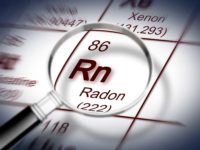As we move through summer and toward the winter heating season, infectious disease experts forecast a gloomy upward trend for COVID-19 cases.
When the infectivity of SARS-CoV-2 became clear earlier this year, we were told to vacate our offices, schools, and fitness centers and stay at home. The clear message was that occupied indoor environments could hasten to the spread of the virus through one transmission route or another. As public buildings now tentatively open up, engineers and building managers suddenly find themselves adding “public health protectors” to their job descriptions and “testing and balancing” humans to their skill sets.
The active debate about how to best manage IAQ to contain COVID-19 disease will only become more urgent when cold outdoor temperatures create a ventilation versus energy use debate. We need help combining outdoor air ventilation, recirculation and filtration, pressurization, humidification and air-cleaning technologies, and guidance on the optimal sequence of these HVAC interventions to create both safe and energy-efficient buildings.
Where can we look for energy-efficient models of air handling to help protect building occupants from this new viral strain? The human respiratory system is a good place to start. The “design and operation” requirements of human respiration are exacting, because inhaled ambient air must be conditioned to meet exact parameters before it reaches our vulnerable lung tissues. Before this air reaches the lungs, it must be at body temperature; saturated to 100% relative humidity; and free of particles, harmful viruses, bacteria, fungal organisms, and dissolved compounds. The partial pressure differentials of oxygen and carbon dioxide between circulating blood and lung air sacs (alveoli) results in the proper delivery of oxygen to red blood cells and the removal of the waste gas (carbon dioxide). The load of air that must be conditioned perfectly, no matter the quality of ambient inhaled air, is huge. The average person breathes approximately 13 million cubic feet of air in their lifetimes at a rate of seven to 17 pint-sized breaths a minute. The daily requirements of 5,000 gallons of air are transported through an average of 15,000 miles of airway channels during inhalation and that distance again during exhalation. How do our bodies accomplish this amazing feat in an energy-efficient and effective way?
Our respiratory system uses the same strategies that are available to HVAC systems in carefully sequenced steps from inhalation to gas exchange in the lungs to exhalation. First, heat is added or removed to match the temperature of our body. Humidification begins immediately to optimize the subsequent air cleaning by sticky mucus in our noses, sinuses, and throats, which traps particles and microbes. Meanwhile, tiny hairs (cilia) wave upward, continually washing the trapped particles away from our lungs. Scavenger cells provided by our immune systems continue to clean the air and airways with antimicrobial chemicals. Water vapor is progressively added from surrounding tissues until the mandatory 100% saturation needed for gas exchange is achieved prior to inhaled air reaching deep lung regions. Upon exhalation, this water vapor evaporates into the ambient air. In buildings with low indoor relative humidity (< 40%), the respiratory tissues can lose more than 3.5 ounces per hour, leading to harmful drying of airway mucus and impaired immune protection.
The sequence of events is important to notice and try to utilize in our HVAC designs because often one step optimizes the effectiveness of the next.
As we debate about the relative benefits of outdoor ventilation, recirculation and filtration, humidification, UVGI, bi-polar ionization, and other technologies, we can turn to the mammalian respiratory tract for guidance. Clearly, this is a viable strategy, or we would not be here today.





